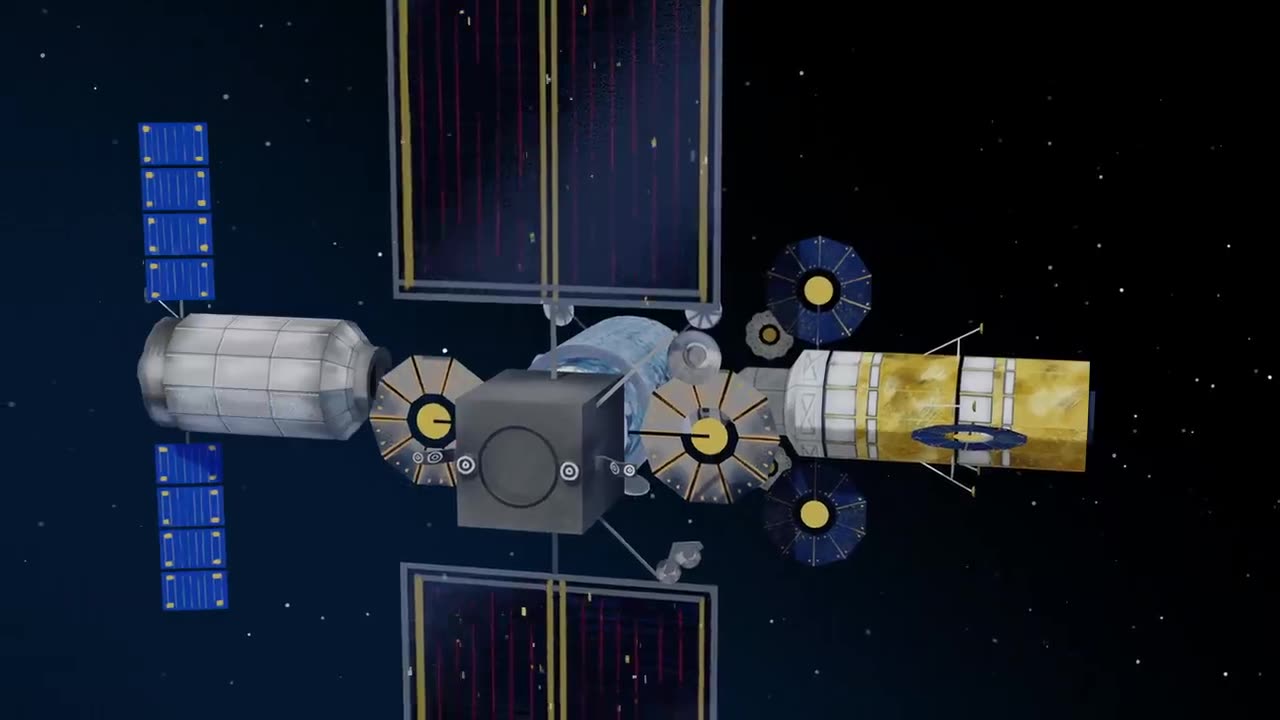Premium Only Content

moon "how we are going to the moon"
As of my last knowledge update in September 2021, there are a few key aspects to consider when describing how we are going to the Moon:
1. **Spacecraft and Rockets:** To travel to the Moon, we use spacecraft propelled by rockets. These rockets are designed to carry both the spacecraft and the necessary fuel to escape Earth's gravitational pull and enter space.
2. **Launch and Ascent:** The journey to the Moon begins with a rocket launch from Earth's surface. The spacecraft is placed atop a powerful rocket, and the rocket's engines ignite to generate an enormous amount of thrust. This thrust propels the rocket and spacecraft upward through the atmosphere and into space. The initial phase of the launch is focused on overcoming Earth's gravity.
3. **Stages of the Rocket:** Most rockets are multi-stage vehicles. As the fuel in each stage is depleted, that stage is jettisoned to reduce weight and increase efficiency. This shedding of stages is why rockets appear to get smaller as they ascend.
4. **Orbital Insertion:** Once the rocket has reached a certain altitude, the spacecraft may enter Earth's orbit. This means that the spacecraft is now traveling at a high speed around the Earth rather than directly away from it. This allows the spacecraft to build up enough speed to escape Earth's gravitational pull.
5. **Trans-Lunar Injection (TLI):** After achieving Earth orbit, the spacecraft's engines are fired again to increase its speed and trajectory away from Earth. This maneuver is known as trans-lunar injection (TLI), and it propels the spacecraft on a course toward the Moon.
6. **Travel to the Moon:** During the journey to the Moon, the spacecraft is in a vacuum and experiences microgravity. The length of the journey depends on factors like the spacecraft's speed, trajectory, and the specific mission goals. This journey can take several days to reach the Moon.
7. **Lunar Orbit Insertion:** Once the spacecraft arrives near the Moon, its engines are fired again to slow it down and allow it to be captured by the Moon's gravitational pull. This maneuver is called lunar orbit insertion. The spacecraft enters into a stable orbit around the Moon.
8. **Moon Landing:** If the mission is intended to land on the Moon's surface, a lander or descent module separates from the orbiting spacecraft. This module carries the astronauts or scientific equipment to the lunar surface. The lander uses its engines to control its descent and make a soft landing.
9. **Surface Operations:** Once on the lunar surface, astronauts or robotic missions conduct various activities, such as collecting samples, performing experiments, and exploring the landscape. They communicate with mission control on Earth using radio signals.
10. **Return to Earth:** After completing the mission objectives on the Moon, the ascent module of the lander launches from the lunar surface to rejoin the orbiting spacecraft. The spacecraft then leaves the Moon's orbit and begins its journey back to Earth.
It's important to note that advancements in space travel continue to evolve, and there may have been developments beyond September 2021 that I am not aware of. If you're looking for the most up-to-date information on lunar missions, I recommend checking with reliable sources like NASA or other space agencies.
-
 1:21:23
1:21:23
T-SPLY
4 hours agoDemocrat Mayor Of Nashville Caught Doxing Ice Agents!
29.2K10 -
 3:16:25
3:16:25
Barry Cunningham
7 hours agoPRESIDENT TRUMP: NOTHING CAN STOP WHAT IS COMING! ARE YOU READY?
70.7K41 -
 13:06
13:06
Colion Noir
7 hours agoOpen Carrier Killed With His Own Gun At Autozone | Open Carry Gone Wrong
54.3K36 -
 57:09
57:09
Kitco NEWS
11 hours agoFiat Collapse Ahead Gold to $8,900 in Global Monetary Shift
16.5K4 -
 16:46
16:46
Nick Shirley
13 hours ago $1.82 earnedAsking Democrats About the Joe Biden Cover Up Scam
22.4K11 -
 2:24:06
2:24:06
I_Came_With_Fire_Podcast
3 hours agoThe 2017 Las Vegas Shooting: Conspiracy, Critical Thinking, and Narratives
18.2K3 -
 9:44
9:44
Melonie Mac
11 hours agoTwitch is Cooked
20.1K15 -
 1:10:41
1:10:41
Glenn Greenwald
11 hours agoSYSTEM UPDATE REVISITED: Prof. John Mearsheimer on Ukraine; Plus: Fallout from a Changing Syria
125K25 -
 1:30:20
1:30:20
Precision Rifle Network
1 day agoS4E17 Guns & Grub - Industry News, 2A, More Training Tips
16.3K3 -
 2:06:13
2:06:13
megimu32
5 hours agoON THE SUBJECT: Icons, Chaos & First-Play Flashbacks - Music Video Nostalgia & Wild Headlines
18.1K8